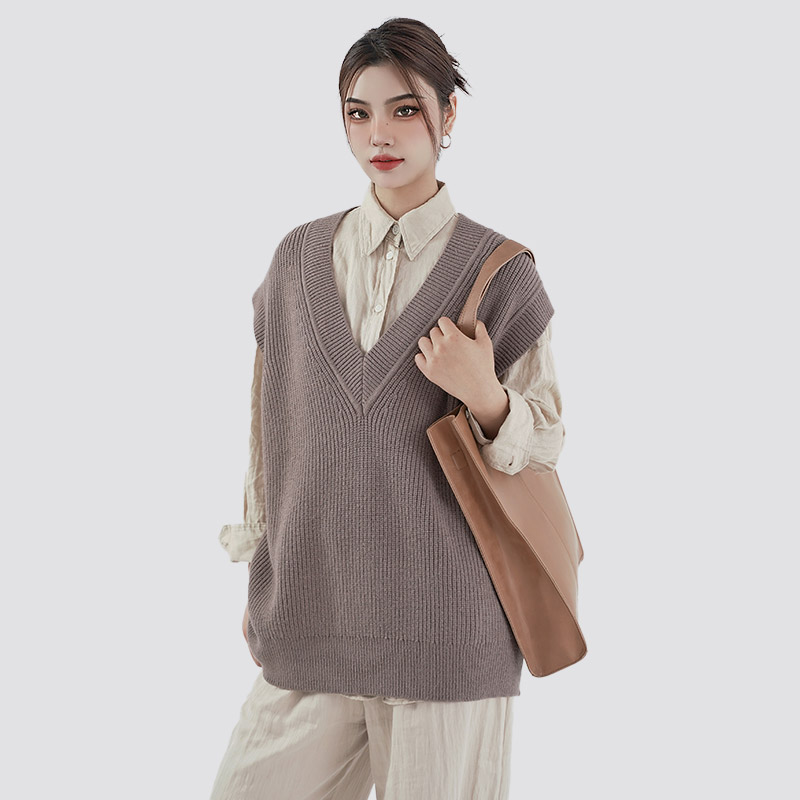How do the knitting techniques used in creating the fur collar knitted cardigan contribute to the garment’s durability and comfort?
The knitting techniques used in creating a fur collar knitted cardigan play a significant role in the garment’s durability, comfort, and overall quality.
1. Durability:
-
Tightness of the Knit:
-
The tightness or density of the knit directly impacts the durability of the cardigan. A tight-knit structure, such as stockinette or ribbed knit, provides a stronger fabric that resists wear and tear better than a loose-knit design. It ensures that the cardigan retains its shape and withstands the stresses of regular use, including the attachment of a fur collar.
-
A looser knit, on the other hand, may have a more relaxed, draping effect, but it can be more prone to snagging or losing its shape over time.
-
-
Reinforced Stitching:
-
Reinforced stitches or double knitting can be used in high-stress areas of the cardigan, such as where the fur collar is attached, to prevent damage from frequent handling or wearing. This increases the garment's longevity and ensures that the collar stays securely in place.
-
-
Elasticity:
-
Techniques like ribbing or interlock knitting add stretch to the fabric, which helps the cardigan maintain its shape and ensures a snug fit over time without sagging. This is particularly important for areas like cuffs and hem, where the cardigan is likely to be subjected to more stress.
-
2. Comfort:
-
Softness and Smoothness:
-
Knitting techniques like garter stitch or seed stitch create a softer texture, enhancing the comfort of the garment, especially around sensitive areas like the neck and shoulders where the fur collar rests. The flexibility and smoothness of the knit allow the garment to move comfortably with the wearer, while also reducing irritation from the collar.
-
-
Breathability:
-
Certain knitting techniques, such as lace knitting or openwork, introduce small gaps in the fabric, increasing breathability. This is particularly useful for cardigans that are worn in layered outfits, as it prevents the wearer from overheating while still providing warmth.
-
A lightweight knit also ensures that the cardigan doesn’t feel too bulky or restrictive when worn, offering greater comfort.
-

-
Thermal Regulation:
-
Wool or cotton knits, which are commonly used in cardigans, provide natural insulation while remaining breathable. These fibers help in maintaining a comfortable body temperature, preventing the wearer from feeling too hot or too cold.
-
-
Fit and Flexibility:
-
Techniques like raglan sleeves or drop shoulders in the knitting design allow the cardigan to have a looser fit without restricting movement. This flexibility contributes to overall comfort and allows the wearer to move freely.
-
3. Aesthetic and Functional Integration of the Fur Collar:
-
Seamless Integration:
-
The knit structure around the neckline or collar area can be designed to smoothly integrate the fur collar, ensuring that the collar lays flat and comfortably on the skin without causing itching or discomfort. A well-executed technique, such as reverse stockinette or a flat ribbing along the neckline, can provide a good base for attaching the fur without creating bulk.
-
-
Attachment and Support:
-
The knitting technique can also affect how the fur collar is attached. A reinforced edge (using techniques like slip stitch or double crochet) can prevent the collar from shifting or loosening over time. It provides the necessary structure for the fur collar to remain securely attached without creating discomfort for the wearer.
-
-
Prevention of Fur Damage:
-
A smooth, tightly-knit foundation helps minimize any friction between the fur collar and the knitted fabric, reducing the chances of the fur becoming matted, shedding, or fraying. This also adds to the overall comfort, as the collar won’t irritate the skin with uneven texture or stray fibers.
-
4. Flexibility in Styling:
-
Customizability of Fit and Style:
-
Knitting allows for greater flexibility in terms of styling and fit. Designers can adjust the stretchiness and shape of the cardigan based on the desired fit. Whether the goal is a fitted cardigan or a loose, draped look, knitting techniques can be tailored to meet these needs while ensuring comfort and wearability.
-
-
Texture and Appearance:
-
The type of knit used (e.g., cable knit, ribbed knit, basket weave) can add visual interest and texture to the cardigan. This complements the luxurious look of the fur collar while maintaining an elegant or casual appearance depending on the occasion.
-

 English
English 中文简体
中文简体 Español
Español












